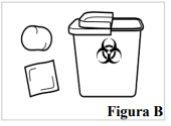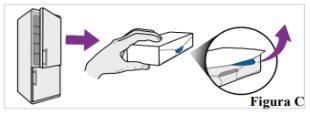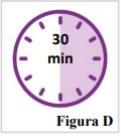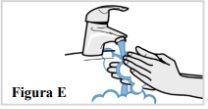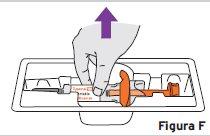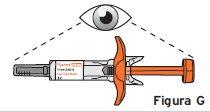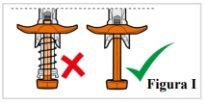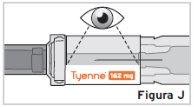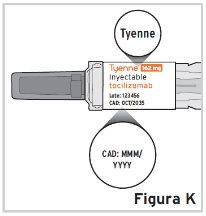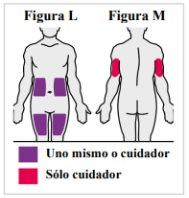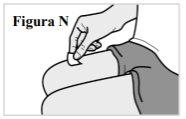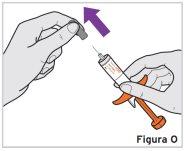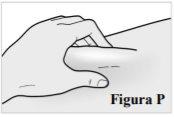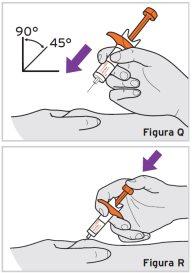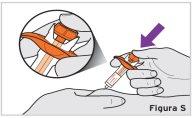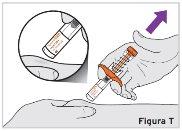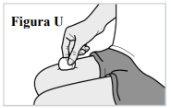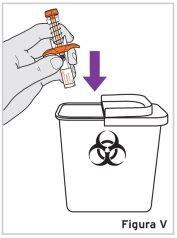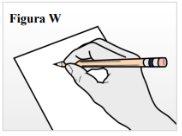
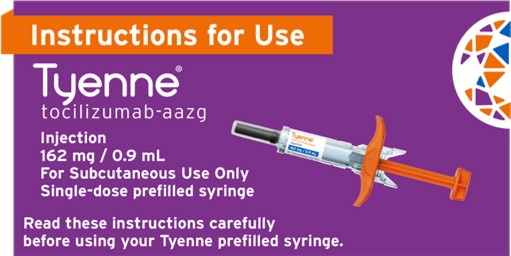
TYENNE 162 mg SOLUTION FOR INJECTION IN PRE-FILLED SYRINGE


How to use TYENNE 162 mg SOLUTION FOR INJECTION IN PRE-FILLED SYRINGE
Introduction
Package Leaflet: Information for the User
Tyenne 162 mg solution for injection in pre-filled syringe
tocilizumab
This medicine is subject to additional monitoring, which will allow for quicker identification of new safety information. You can help by reporting any side effects you may get. The last section of section 4 will tell you how to report side effects.
Read all of this leaflet carefully before you start using this medicine, because it contains important information for you.
- Keep this leaflet, you may need to read it again.
- If you have any further questions, ask your doctor, pharmacist or nurse.
- This medicine has been prescribed for you only. Do not pass it on to others. It may harm them, even if their signs of illness are the same as yours.
- If you get any side effects, talk to your doctor, pharmacist or nurse. This includes any possible side effects not listed in this leaflet. See section 4.
In addition to this leaflet, you will be given a Patient Alert Card, which contains important safety information that you need to know before you receive and during treatment with Tyenne.
Contents of the pack
- What is Tyenne and what is it used for
- What you need to know before you use Tyenne
- How to use Tyenne
- Possible side effects
- Storage of Tyenne
- Contents of the pack and other information
1. What is Tyenne and what is it used for
Tyenne contains the active substance tocilizumab, which is a protein obtained from specific immune cells (monoclonal antibody), that blocks the action of a specific type of protein (cytokine) called interleukin-6. This protein is involved in inflammatory processes in the body, and by blocking it, inflammation can be reduced. Tyenne is indicated for the treatment of:
- adults with moderate to severe active rheumatoid arthritis (RA), which is an autoimmune disease, if previous treatments have not worked well.
- adults with severe, active and progressive rheumatoid arthritis (RA), who have not been previously treated with methotrexate.
Tyenne helps to reduce the symptoms of RA such as pain and swelling in the joints and can also improve performance in daily tasks. Tyenne has been shown to decrease the progression of damage to the cartilage and bones of the joints caused by the disease and improve the ability to perform daily activities.
Tyenne is normally used in combination with another medicine for RA called methotrexate. However, Tyenne may be administered alone if your doctor determines that methotrexate is not suitable.
- adults with a disease of the arteries called giant cell arteritis (GCA), caused by inflammation of the largest arteries in the body, especially those that supply blood to the head and neck. Symptoms may include headache, fatigue (tiredness) and jaw pain. Effects may include stroke and blindness.
Tyenne may reduce the pain and swelling of the arteries and veins in the head, neck, and arms.
GCA is often treated with medicines called steroids. These are usually effective, but can have side effects if used at high doses for a long time. Reducing the dose of steroids can also lead to a flare-up of GCA. The addition of Tyenne to treatment makes it possible to use steroids for a shorter time while still controlling the disease.
- children and adolescents, 1 year of age and older with active systemic juvenile idiopathic arthritis (sJIA), an inflammatory disease that causes pain and swelling in one or more joints, as well as fever and rash.
Tyenne is used to improve the symptoms of sJIA. It can be administered in combination with methotrexate or alone.
- children and adolescents, 2 years of age and older with active polyarticular juvenile idiopathic arthritis (pJIA). This is an inflammatory disease that causes pain and swelling in one or more joints.
Tyenne is used to improve the symptoms of pJIA. It can be administered in combination with methotrexate or alone.
2. What you need to know before you use Tyenne
Do not use Tyenne
- If you or the pediatric patient you are caring for is allergic to tocilizumab or any of the other components of this medicine (listed in section 6).
- If you or the pediatric patient you are caring for has a severe active infection.
If any of these apply to you, consult your doctor. Do not use Tyenne.
Warnings and precautions
Consult your doctor, pharmacist or nurse before starting treatment with Tyenne.
- If you experience allergic reactionssuch as chest tightness, wheezing, dizziness or severe dizziness, swelling of the lips, tongue, face or rash, hives or itching during or after injection, tell your doctor immediately.
- If you have experienced any symptoms of an allergic reaction after administration of Tyenne, do not take the next dose until you have informed your doctor and your doctor has indicated that you can take the next dose.
- If you have any type of infection, whether short-term or long-term, or if you get infections often. Tell your doctor immediatelyif you feel unwell. Tyenne may reduce the ability of your body to respond to infections and may make an existing infection worse or increase the likelihood of getting a new infection.
- If you have had tuberculosis, inform your doctor. Your doctor will check for signs and symptoms of tuberculosis before starting treatment with Tyenne. Inform your doctor immediately if symptoms of tuberculosis (persistent cough, weight loss, general malaise, low-grade fever), or any other infection appear during or after treatment.
- If you have had intestinal ulcer or diverticulitis, inform your doctor. Symptoms would include abdominal pain and unexplained changes in bowel habits with fever.
- If you have liver disease, inform your doctor. Before using Tyenne, your doctor will perform a blood test to measure your liver function.
- If a patient has been recently vaccinated, or is scheduled to be vaccinated, inform your doctor. All patients must be up to date with their vaccination schedule before starting treatment with Tyenne. Certain types of vaccines must not be administered while receiving Tyenne.
- If you have cancer, inform your doctor. Your doctor will have to decide if you can continue receiving treatment with Tyenne.
- If you have cardiovascular risk factors, such as high blood pressure, and high cholesterol levels, inform your doctor. These factors need to be controlled while receiving treatment with Tyenne.
- If you have kidney problemsof moderate to severe degree, your doctor will monitor you.
- If you have persistent headaches.
Your doctor will perform blood tests before you receive Tyenne, to determine if you have a low white blood cell count, a low platelet count or elevated liver enzymes.
Children and adolescents
The subcutaneous injection of Tyenne pre-filled syringe is not recommended in children under 1 year of age.
Tyenne must not be administered to children with sJIA (systemic juvenile idiopathic arthritis) with a weight below 10 kg.
If a child has a history of macrophage activation syndrome(uncontrolled activation and proliferation of specific blood cells), inform your doctor. Your doctor will have to decide if Tyenne can still be administered.
Other medicines and Tyenne
Tell your doctor if you are taking any other medicines, or have recently taken any. This is because Tyenne may affect the way some medicines work, and a dose adjustment may be necessary. Tell your doctorif you have recently used medicines that contain any of the following active substances:
- methylprednisolone, dexamethasone, used to reduce inflammation,
- simvastatin or atorvastatin, used to reduce cholesterol levels,
- calcium channel blockers (such as amlodipine), used to treat high blood pressure,
- theophylline, used to treat asthma,
- warfarin or phenprocoumon, used as anticoagulants,
- phenytoin, used to treat seizures,
- cyclosporin, used in organ transplants as an immunosuppressant,
- benzodiazepines (such as temazepam), used to calm anxiety.
Regarding vaccines, see the previous warnings section.
Because there is no clinical experience, the use of Tyenne with other biologic medicines used to treat RA, sJIA, pJIA or GCA is not recommended.
Pregnancy and breastfeeding
Tyenne must not be used during pregnancy, unless clearly necessary. Talk to your doctor if you are pregnant, think you may be pregnant, or plan to become pregnant.
Women of childbearing age must use effective contraceptive methods during and up to 3 months after finishing treatment.
Stop breastfeeding if you start treatment with Tyenne, and consult your doctor. Before restarting breastfeeding, at least 3 months must have passed since your last treatment with Tyenne. It is not known if Tyenne passes into breast milk.
Driving and using machines
This medicine may cause dizziness, if you feel dizzy, do not drive or use machines.
Tyenne contains sodium
This medicine contains less than 23 mg of sodium (1 mmol) per 0.9 ml dose, which is essentially “sodium-free”.
3. How to use Tyenne
Follow the instructions for administration of this medicine exactly as prescribed by your doctor, pharmacist or nurse. If you are unsure, consult your doctor, pharmacist or nurse.
Treatment should be initiated by a healthcare professional with experience in the diagnosis and treatment of RA, sJIA, pJIA or GCA.
Adults with RA or GCA
The recommended dosefor adults with RA (rheumatoid arthritis) and GCA (giant cell arteritis) is 162 mg (the content of one pre-filled syringe) administered once a week.
Children and adolescents with sJIA (1 year of age and older)
The usual dose of Tyenne depends on the patient's weight.
- If the patient weighs less than 30 kg: the dose is 162 mg (the content of 1 pre-filled syringe), once every 2 weeks
- If the patient weighs 30 kg or more: the dose is 162 mg (the content of 1 pre-filled syringe), once a week
Children and adolescents with pJIA (2 years of age and older)
The usual dose of Tyenne depends on the patient's weight.
- If the patient weighs less than 30 kg: the dose is 162 mg (the content of 1 pre-filled syringe), once every 3 weeks.
- If the patient weighs 30 kg or more: the dose is 162 mg (the content of 1 pre-filled syringe), once every 2 weeks.
Tyenne is administered by injection under the skin (subcutaneously). At the start, your doctor or nurse may inject Tyenne for you. However, your doctor may decide that you can inject Tyenne yourself. In this case, you will receive information on how to self-inject Tyenne. Parents and caregivers will receive instructions on how to inject Tyenne to patients who cannot inject themselves, such as children.
Talk to your doctor if you have any questions about how to self-administer an injection or to the child you are caring for. At the end of this leaflet, you will find detailed “instructions for administration”.
If you use more Tyenne than you should
As Tyenne is administered in a pre-filled syringe, it is unlikely that you will be given too much. However, if you are concerned, talk to your doctor, pharmacist or nurse.
If an adult with RA and GCA or a child or adolescent with sJIA misses or forgets a dose, it is very important to use Tyenne exactly as prescribed by your doctor. Keep a record of your next dose.
- If you forget your weekly dose within 7 days, take your dose on the next scheduled day.
- If you forget your every 2 weeks dose within 7 days, inject a dose as soon as you remember and administer your next dose according to your original schedule.
- If you forget your dose for 7 days or more, or are unsure when to inject Tyenne, call your doctor or pharmacist.
If a child or adolescent with pJIA misses or forgets a dose
It is very important to use Tyenne exactly as prescribed by your doctor. Keep a record of your next dose.
- If you forget a dose within 7 days, inject a dose as soon as you remember and administer your next dose according to your original schedule.
- If you forget a dose for 7 days or more, or are unsure when to inject Tyenne, call your doctor or pharmacist.
If you stop treatment with Tyenne
You must not stop treatment with Tyenne without consulting your doctor first.
If you have any other questions about the use of this medicine, ask your doctor, pharmacist or nurse.
4. Possible side effects
Like all medicines, Tyenne can cause side effects, although not everybody gets them. Side effects may occur up to at least 3 months after your last dose of Tyenne.
Serious side effects: consult your doctor immediately.
These are common: May affect up to 1 in 10 people
Allergic reactionsduring or after injection:
- difficulty breathing, chest tightness or dizziness,
- rash, itching, hives, swelling of the lips, tongue, face or throat.
If you experience any of these symptoms, talk to your doctor immediately.
Signs of serious infections:
- fever and chills,
- mouth or skin blisters,
- stomach pain.
Signs and symptoms of liver toxicity:
May affect up to 1 in 1,000 people
- fatigue,
- abdominal pain,
- jaundice (yellowing of the skin or eyes).
If you notice any of these symptoms, inform your doctor as soon as possible.
Very common side effects:
May affect more than 1 in 10 people
- upper respiratory tract infections, with typical symptoms such as cough, nasal congestion, runny nose, sore throat and headache,
- high levels of fat in the blood (cholesterol),
- reactions at the injection site.
Common side effects:
May affect up to 1 in 10 people
- lung infection (pneumonia),
- shingles (herpes zoster),
- fever (oral herpes), blisters,
- skin infections (cellulitis), sometimes with fever and chills,
- rash and itching, urticaria,
- allergic reactions (hypersensitivity),
- eye infection (conjunctivitis),
- headache, dizziness, high blood pressure,
- mouth ulcers, stomach pain,
- fluid retention (edema) in the lower legs, weight gain,
- cough, shortness of breath,
- low white blood cell count in blood tests (neutropenia, leucopenia),
- abnormal liver function tests (elevated transaminases),
- increased bilirubin measured by blood tests,
- low levels of fibrinogen in the blood (a protein involved in blood clotting).
Uncommon side effects:
May affect up to 1 in 100 people
- diverticulitis (fever, nausea, diarrhea, constipation, stomach pain),
- swollen and red areas in the mouth,
- high levels of fat in the blood (triglycerides),
- stomach ulcers,
- kidney stones,
- hypothyroidism.
Rare side effects:
May affect up to 1 in 1,000 people
- Stevens-Johnson syndrome (skin rash that can lead to severe skin peeling),
- fatal allergic reactions (anaphylaxis),
- liver inflammation (hepatitis), jaundice.
Very rare side effects:
May affect up to 1 in 10,000 people
- low white blood cell, red blood cell and platelet count in blood tests,
- liver failure.
Additional side effects in children and adolescents with sJIA or pJIA
In children and adolescents with sJIA or pJIA, side effects are generally similar to those in adults. Some side effects are seen more frequently in children and adolescents: inflammation of the nose and throat, headache, nausea, and decreased white blood cell count.
Reporting of side effects
If you experience any side effects, talk to your doctor, pharmacist or nurse, even if it is possible side effects not listed in this leaflet. You can also report side effects directly through the national reporting system included in Appendix V. By reporting side effects, you can help provide more information on the safety of this medicine.
5. Storage of Tyenne
Keep this medicine out of sight and reach of children.
Do not use this medicine after the expiration date shown on the label of the prefilled syringe and on the carton after (EXP). The expiration date is the last day of the month indicated.
Store in a refrigerator (between 2 °C and 8 °C). Do not freeze.
Keep the prefilled syringes in the outer packaging to protect from light.
A single prefilled syringe may be stored at temperatures up to a maximum of 25 °C for a single period of up to 14 days. The prefilled syringe must be protected from light and discarded if not used within 14 days.
Do not use this medicine if you notice it is cloudy or contains particles, is of a color other than colorless to pale yellow, or any part of the prefilled syringe appears damaged.
Do not shake the syringe.
After removing the needle cap, the injection should be started immediately to avoid the medicine drying out and blocking the needle. If the prefilled syringe is not used immediately after removing the cap, it should be discarded in a puncture-proof container and a new prefilled syringe should be used.
If after inserting the needle, the syringe plunger cannot be pressed, the prefilled syringe should be discarded in a special container for puncture-proof objects and a new one should be used.
6. Container Contents and Additional Information
Tyenne Composition
- The active ingredient is tocilizumab
Each pre-filled syringe contains 162 mg of tocilizumab in 0.9 ml.
- The other components are L-arginine, L-histidine, L-lactic acid, sodium chloride, polysorbate 80, hydrochloric acid (E507) and/or sodium hydroxide (E524), water for injectable preparations.
Product Appearance and Container Contents
Tyenne is an injection solution. The solution is clear and colorless to pale yellow.
Tyenne is supplied in 0.9 ml pre-filled syringes containing 162 mg of tocilizumab injection solution.
Each container contains 1, 4, or 12 pre-filled syringes. Only certain pack sizes may be marketed.
Marketing Authorization Holder and Manufacturer
Fresenius Kabi Deutschland GmbH
Else-Kroener-Strasse 1
61352 Bad Homburg v.d.Hoehe
Germany
Manufacturer
Fresenius Kabi Austria GmbH
Hafnerstrasse 36
8055 Graz
Austria
Date of Last Revision of this Leaflet:February 2024
Other Sources of Information
Detailed information on this medicinal product is available on the European Medicines Agency website http://www.ema.europa.eu/.
- Instructions for Use
Read these instructions for use carefully before using the Tyenne pre-filled syringe and each time you get a replacement.
Important Information
- Read the patient leaflet that comes with the Tyenne pre-filled syringe for the most important information you need to know before using it.
- Before using the Tyenne pre-filled syringe for the first time, make sure your doctor shows you or your caregiver the correct way to use it. Note that the syringe comes in an open plastic tray.
- Blind or visually impaired persons should not use the Tyenne pre-filled syringe without the help of a trained person to use it.
- Talk to your doctor if you have any questions or concerns.
Storing the Tyenne Pre-filled Syringe
- Store the pre-filled syringe in its original container in a refrigerator at a temperature of 2°C and 8°C.
- Keep the pre-filled syringe in its original container to protect it from light.
- Keep the pre-filled syringe out of the reach and sight of children.
Do notfreeze Tyenne.
Do notuse Tyenne pre-filled syringe that has been frozen or exposed to direct sunlight, as it may cause illness.
Using the Tyenne Pre-filled Syringe
- Always inject Tyenne using the technique your doctor taught you.
- The Tyenne pre-filled syringe is for single dose (one-time use) only.
Do notshare the Tyenne pre-filled syringe with another person. You could infect another person or get an infection from them.
- The Tyenne pre-filled syringe has a transparent protector that covers the needle after injection.
Do notuse the pre-filled syringe if the box is open or damaged.
Do notuse the pre-filled syringe if it has been dropped onto a hard surface.
The pre-filled syringe may be broken, even if you cannot see the break.
Do notremove the needle cap from the pre-filled syringe until you are ready to inject.
Do notattempt to reuse the pre-filled syringe, as it may cause infection.
Traveling with the Tyenne Pre-filled Syringe
- If necessary, for example when traveling, the Tyenne pre-filled syringe can be stored at room temperature between 20°C and 25°C for a maximum of 14 days.
- Discard (dispose of) any product that has been stored at room temperature between 20°C and 25°C and not used within 14 days.
- When traveling by air, always consult your airline and doctor about carrying injectable medications with you. Always carry Tyenne in your hand luggage, as the aircraft's cargo hold may be very cold and could cause freezing.
Tyenne Pre-filled Syringe Parts
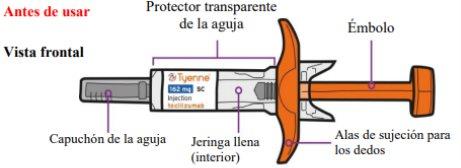
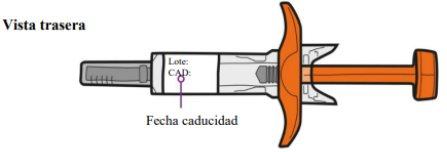

Do notattempt to activate the transparent needle protector before injecting.
STEP 1: Prepare Your Injection | |
1.1. Prepare a flat and clean surface, such as a table or counter, in a well-lit area. 1.2. Required materials (Figure B):
|
|
1.3. Remove the Tyenne box from the refrigerator and open it (Figure C). |
|
1.4. Remove the plastic tray from the Tyenne box:
1.5. Leave the pre-filled syringe in its plastic tray at room temperature for at least 30 minutes before using it to allow the medication to reach room temperature (Figure D). Injecting cold medication can make the injection uncomfortable and difficult to administer. Do not heat the syringe in any other way, such as in a microwave, hot water, or direct sunlight. Do not remove the needle protector while the Tyenne pre-filled syringe is reaching room temperature. |
|
1.6. Prepare and review your previous injection site records. This will help you choose the correct injection site for this injection (see STEP 8: Record Your Injection). | |
STEP 2: Wash Your Hands 2.1. Wash your hands with water and soap and dry them well with a clean towel (Figure E). |
|
STEP 3: Check the Syringe
|
|
Do not hold the pre-filled syringe by the plunger or the needle protector. If you do, you may damage the syringe or activate the transparent needle protector. 3.1. Check the pre-filled syringe to ensure:
|
|
|
|
Do notuse the syringe if it shows any signs of damage. If it does, contact your doctor or pharmacist and dispose of the syringe in your sharp object disposal container (see STEP 7: Dispose of Your Syringe). |
|
3.2. Check the liquid through the transparent needle protector to ensure that: | |
Do notuse the syringe if the liquid is cloudy, discolored, contains particles or flakes, or shows any signs of deterioration. If the liquid is cloudy, discolored, contains particles or flakes, call your doctor or pharmacist immediately and dispose of the syringe in your sharp object disposal container (see STEP 7: Dispose of Your Syringe). |
|
3.3. Check the label to ensure that:
Do notuse the syringe if:
If the label does not show Tyenne or the expiration date has passed, contact your doctor or pharmacist immediately and dispose of the pre-filled syringe in your sharp object disposal container (see STEP 7: Dispose of Your Syringe). |
|
STEP 4: Choose the Injection Site | |
4.1. Choose an injection site (Figure L):
Do notattempt to use the upper arm area by yourself. Inject only into the indicated areas. |
|
4.2. Choose a different site (at least 3 cm away from the last injection site) each time to reduce redness, irritation, or other skin problems. Do notinject into an area that is painful (sensitive), bruised, red, hard, scarred, or has stretch marks, moles, or tattoos. If you have psoriasis, do notinject into any lesions or red, thickened, raised, or scaly areas. | |
STEP 5: Clean the Injection Site 5.1. Clean the skin at the injection site with an alcohol swab in a circular motion (Figure N). Let the skin dry before injecting. Do not blow or touch the injection site after cleaning. |
|
STEP 6: Apply Your Injection 6.1. Remove the needle protector
Do nothold the plunger while removing the needle cap. If you cannot remove the needle cap, ask a caregiver for help or contact your doctor.
You may see drops of liquid on the tip of the needle. This is normal and will not affect your dose. Do nottouch the needle or let it touch any surface after removing the needle cap, as you may accidentally prick yourself with the needle. |
|
| |
6.2. Pinch the skin
6.3. Insert the needle Hold the syringe like you would hold a pen. |
|
| |
It is important to use the correct angle to ensure that the medication is administered under the skin (in the fatty tissue); otherwise, the injection may be painful and the medication may not be effective. 6.4. Inject
Do notremove the needle from the skin when the plunger is fully pressed. | |
| |
6.5. Finish the injection
The safety system will withdraw the needle from the skin and cover the needle (Figure T).
Important:Call your doctor immediately if:
Injecting an incorrect amount of medication could affect your treatment. Do notreuse a syringe, even if you have not injected all the medication. Do notattempt to recap the needle, as you may prick yourself. |
|
6.6. After the injection If there is blood or liquid at the injection site, gently press a cotton ball or gauze onto the skin (Figure U). You can use a bandage if necessary. Do notrub the injection site. |
|
STEP 7: Dispose of Your Syringe 7.1. Dispose of your used syringe in a sharp object disposal container immediately after use (Figure V). | |
If you do not have a sharp object disposal container, you can use a household container that is:
When your sharp object disposal container is almost full, you will need to follow local recommendations for the correct disposal of the container. Do notthrow away used syringes in household trash. Do notthrow away used sharp object disposal containers in household trash, unless local regulations allow it. Do notrecycle used sharp object disposal containers. |
|
Keep Tyenne pre-filled syringes and the disposal container out of the reach and sight of children. | |
STEP 8: Record Your Injection 8.1 To help you remember when and where you should have your next injection, write down the date, time, and specific part of your body where you injected. (Figure W). It may also be helpful to write down any questions or concerns you have about the injection, so you can ask your doctor. |
|
If you have any questions or concerns about the Tyenne pre-filled syringe, contact your doctor who is familiar with Tyenne. |
- Country of registration
- Active substance
- Prescription requiredYes
- Manufacturer
- CompositionPOLISORBATO 80 (0,2 mg mg), CLORURO DE SODIO (0,6 mg mg), HIDROXIDO DE SODIO (E 524) (c.s.p. 6,0 pH mg)
- This information is for reference only and does not constitute medical advice. Always consult a licensed doctor before taking any medication. Oladoctor is not responsible for medical decisions based on this content.
- Alternatives to TYENNE 162 mg SOLUTION FOR INJECTION IN PRE-FILLED SYRINGEDosage form: INJECTABLE, 162 mgActive substance: tocilizumabManufacturer: Celltrion Healthcare Hungary Kft.Prescription requiredDosage form: INJECTABLE, 162 mgActive substance: tocilizumabManufacturer: Celltrion Healthcare Hungary Kft.Prescription requiredDosage form: INJECTABLE PERFUSION, 20 mg/mlActive substance: tocilizumabManufacturer: Celltrion Healthcare Hungary Kft.Prescription required


